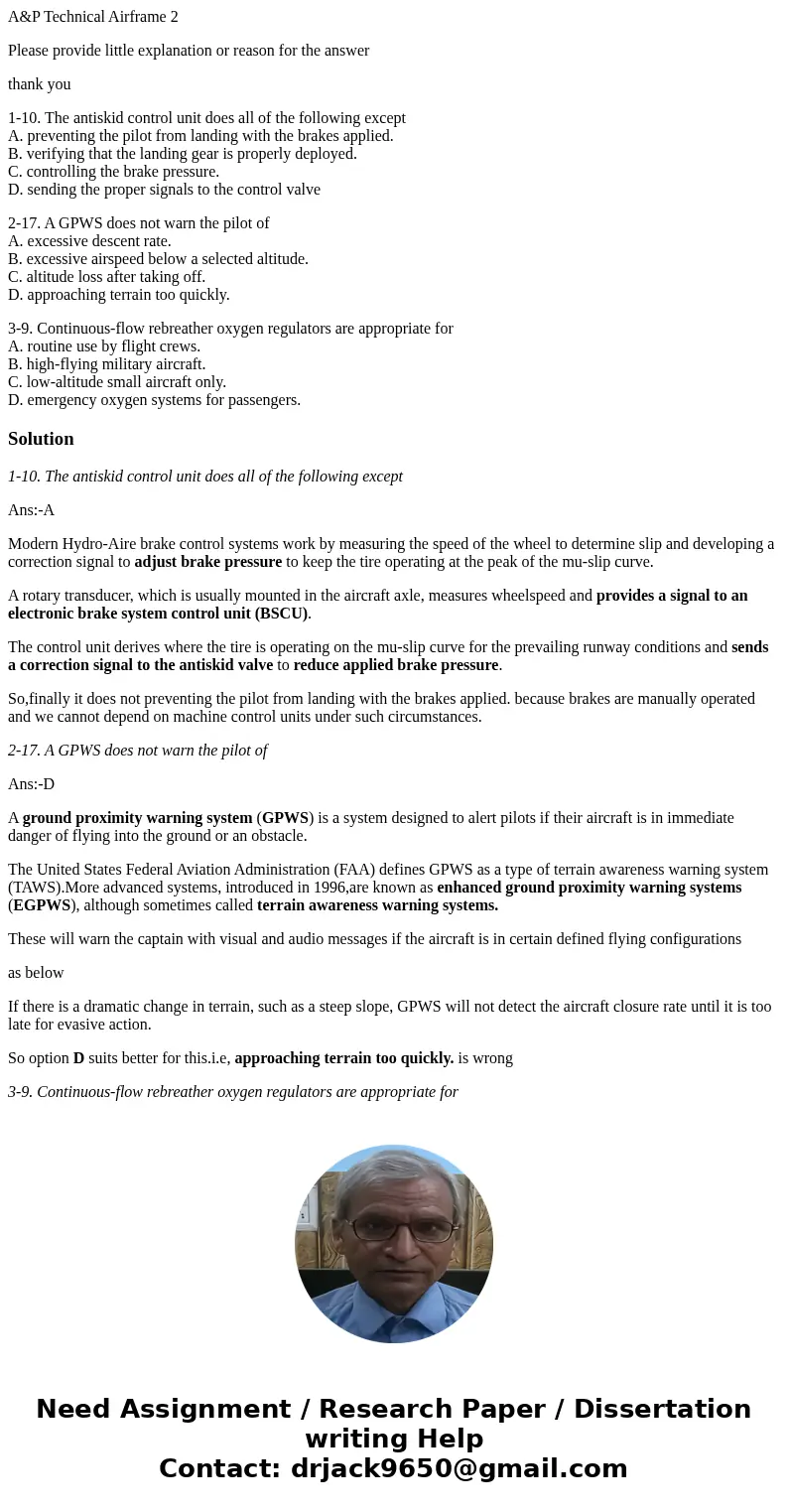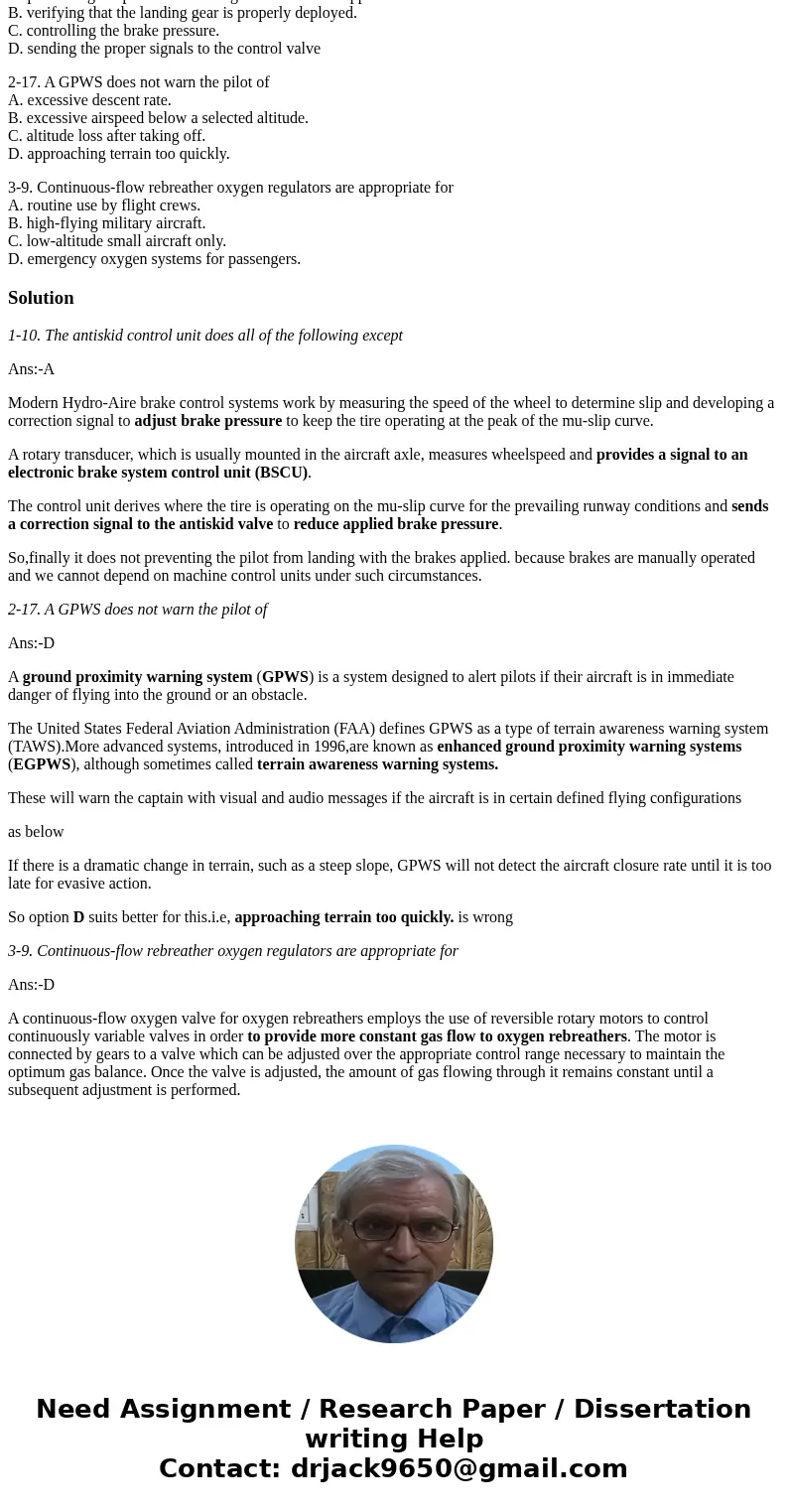AP Technical Airframe 2 Please provide little explanation or
A&P Technical Airframe 2
Please provide little explanation or reason for the answer
thank you
1-10. The antiskid control unit does all of the following except
A. preventing the pilot from landing with the brakes applied.
B. verifying that the landing gear is properly deployed.
C. controlling the brake pressure.
D. sending the proper signals to the control valve
2-17. A GPWS does not warn the pilot of
A. excessive descent rate.
B. excessive airspeed below a selected altitude.
C. altitude loss after taking off.
D. approaching terrain too quickly.
3-9. Continuous-flow rebreather oxygen regulators are appropriate for
A. routine use by flight crews.
B. high-flying military aircraft.
C. low-altitude small aircraft only.
D. emergency oxygen systems for passengers.
Solution
1-10. The antiskid control unit does all of the following except
Ans:-A
Modern Hydro-Aire brake control systems work by measuring the speed of the wheel to determine slip and developing a correction signal to adjust brake pressure to keep the tire operating at the peak of the mu-slip curve.
A rotary transducer, which is usually mounted in the aircraft axle, measures wheelspeed and provides a signal to an electronic brake system control unit (BSCU).
The control unit derives where the tire is operating on the mu-slip curve for the prevailing runway conditions and sends a correction signal to the antiskid valve to reduce applied brake pressure.
So,finally it does not preventing the pilot from landing with the brakes applied. because brakes are manually operated and we cannot depend on machine control units under such circumstances.
2-17. A GPWS does not warn the pilot of
Ans:-D
A ground proximity warning system (GPWS) is a system designed to alert pilots if their aircraft is in immediate danger of flying into the ground or an obstacle.
The United States Federal Aviation Administration (FAA) defines GPWS as a type of terrain awareness warning system (TAWS).More advanced systems, introduced in 1996,are known as enhanced ground proximity warning systems (EGPWS), although sometimes called terrain awareness warning systems.
These will warn the captain with visual and audio messages if the aircraft is in certain defined flying configurations
as below
If there is a dramatic change in terrain, such as a steep slope, GPWS will not detect the aircraft closure rate until it is too late for evasive action.
So option D suits better for this.i.e, approaching terrain too quickly. is wrong
3-9. Continuous-flow rebreather oxygen regulators are appropriate for
Ans:-D
A continuous-flow oxygen valve for oxygen rebreathers employs the use of reversible rotary motors to control continuously variable valves in order to provide more constant gas flow to oxygen rebreathers. The motor is connected by gears to a valve which can be adjusted over the appropriate control range necessary to maintain the optimum gas balance. Once the valve is adjusted, the amount of gas flowing through it remains constant until a subsequent adjustment is performed.


 Homework Sourse
Homework Sourse